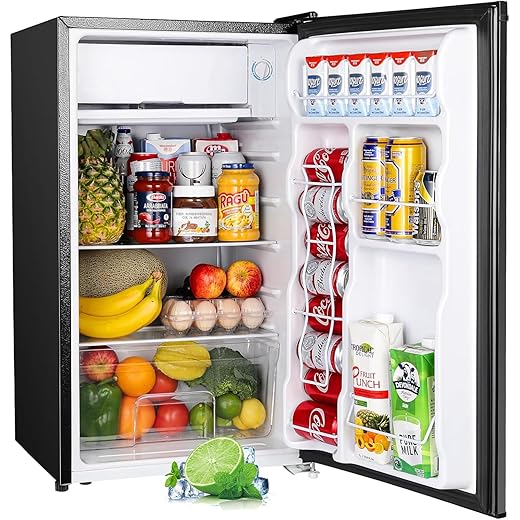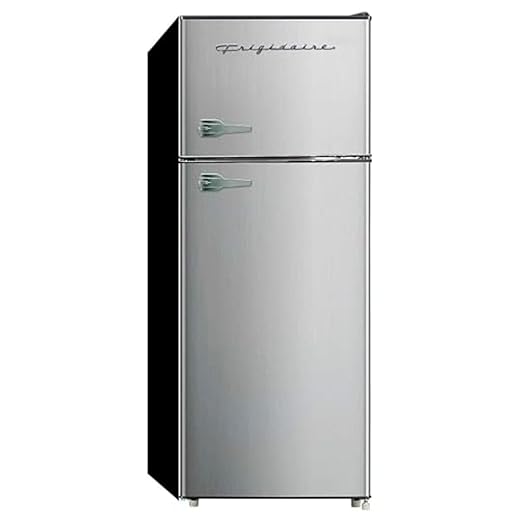Unlock the Secrets of Energy Ratings
Understanding refrigerator energy ratings can not only save you money but also make a positive impact on the environment. This guide will walk you through the essentials of energy ratings for refrigerators, empowering you to make informed choices that benefit your wallet and the planet.
What You Need to Get Started
Deciphering Energy Labels
Why That Label Matters More Than You Think!Start by examining the energy labels on refrigerators. These labels give you critical insights into efficiency. Look for the key figures:
Use this information to compare options and select a refrigerator that meets your energy-saving goals.
Understanding Energy Consumption
Is Your Old Fridge Costing You a Fortune?Evaluate how refrigerators differ in energy consumption. Start by checking the annual energy use in kilowatt-hours (kWh) specified on the label. For instance, if one model uses 400 kWh and another uses 600 kWh annually, the first will save you money in the long run.
Compare features. Different technologies, such as inverter compressors, can enhance efficiency. A fridge with an inverter might cost more upfront but save on energy bills over time.
Consider real-life scenarios. If you frequently stock your refrigerator, a larger model may seem necessary, yet it might consume more energy. Evaluate your usage habits.
Monitor your utility bills. After you purchase, keep an eye on your monthly expenses to see how your new model affects your overall energy costs. By understanding energy consumption now, you can make savvy purchasing decisions that fit both your lifestyle and budget.
Exploring Energy Star Ratings
Is Energy Star Really Worth It?Discover the benefits of Energy Star-rated refrigerators. When you choose a fridge with the Energy Star certification, you’re selecting an appliance that meets rigorous efficiency standards, often using 10-50% less energy than non-certified models. Imagine saving on your electricity bill while minimizing your carbon footprint!
Look for the Energy Star logo. This indicates that the model has passed strict energy efficiency criteria. For example, an Energy Star-rated fridge often features advanced technologies like better insulation or smart temperature controls to reduce energy use.
Consider financial incentives. Many local utility companies offer rebates for Energy Star purchases, making these models even more attractive. As you shop for your next refrigerator, prioritize Energy Star options to enjoy long-term savings and environmental benefits. Your decision can make a significant impact!
Calculating Long-Term Costs
Save or Spend? The Real Cost of Your Fridge!Break down the total cost of ownership. Start by combining the upfront price of the refrigerator with its estimated annual energy costs. For instance, if a fridge costs $1,000 and its energy use is around $400 annually, after five years, your total cost would be $2,000.
Use an energy cost calculator. Many calculators are available online, helping you input wattage and local energy rates to project costs over time. This method shows you the impact of energy efficiency on your wallet.
Account for potential maintenance. Some models have warranties that cover repairs, while others may require more frequent servicing. Consider these factors, as a more expensive model now could save you money on repairs later.
Evaluate your findings. Compare the total costs of different models, and choose the one that balances affordability with long-term savings. A little calculation now can lead to significant savings in the future!
Comparing Models Effectively
Are You Choosing the Right Fridge for Your Home?Compare energy ratings directly. Start by listing the energy consumption figures of various models. For example, if one fridge consumes 350 kWh/year while another uses 450 kWh/year, that’s a clear distinction in potential savings.
Evaluate additional features. Look beyond energy ratings. Smart functionalities, adjustable shelving, and dual temperature zones can enhance user experience. A fridge may save power but be less convenient, which can also affect long-term satisfaction.
Search for incentives. Many retailers offer promotions on energy-efficient appliances. Check for discounts or financing options that make a more efficient model accessible. You might find that a higher upfront cost pays off through lower energy bills and rebates.
Consult reviews and ratings. Tap into user experiences and expert opinions. Websites and forums can reveal how well a model performs in real-life scenarios, ensuring your choice aligns with your needs and habits.
Your Energy-Efficient Journey Begins Now
By understanding refrigerator energy ratings, you can make better choices that save money and help the environment. Use this knowledge to shop wisely and choose the best refrigerator for your home. What small changes will you make today to contribute to a more sustainable future?






I kinda wish you had more visuals in this guide. Some charts or graphs would really help to drive the points home, you know?
Thanks for the feedback, Ava! Visuals could definitely make the info more digestible. We’ll consider that for future updates.
True! A photo comparison of energy labels would be awesome. Sometimes it’s hard to differentiate them quickly.
I appreciate the section on comparing models. Shopping for appliances can feel like a full-time job! 😩 How do you guys feel about brands? Any recommendations?
Brand can definitely make a difference! It often comes down to personal preference, but some brands are known for better efficiency.
I’m a fan of LG fridges! They seem to balance quality and energy efficiency well. What about you all?
This guide is like a lifesaver! 🔑 Seriously, the part about understanding energy consumption opened my eyes. I’ve been wasting money on an old fridge for years. Can’t wait to upgrade!
Thanks, Markus! Upgrading can really make a huge difference in both energy bills and food preservation.
Right?! I didn’t realize how much of a difference it could make until I bought my new one last year. Worth every penny!
Ehh, I’m not convinced these energy ratings are that important. I mean, it’s just a fridge, right? 😒
I get where you’re coming from, Kyle, but energy ratings actually can save you money over time! It’s worth checking.
I thought the same until I realized I was spending way too much on my energy bill. Definitely worth the effort!
Wow, this guide is super helpful! I always got confused by those energy labels, but now it makes sense! I didn’t even know about the Energy Star ratings before. Honestly, this will help me when I’m shopping for a new fridge. Thanks for breaking it down! 😊
Totally agree! I always just looked for the cheapest fridge and didn’t pay attention to energy costs. Lesson learned! 😅
I’m glad you found it helpful, Sarah! Energy labels can be tricky, but understanding them can really save you money in the long run.
Loved it! I just bought a new fridge after reading this, and I feel so good about my choice! The Energy Star thing is a game changer. Who knew?! 🥳
Congrats, Nina! That’s awesome to hear! Energy-efficient appliances really do make a difference.
Nice! I wanna hear how it performs for you. It’s always good to get real feedback from users.
This is a great overview, but I still feel a bit lost. Like, how do I actually calculate the long-term costs? Is there a formula or something? 🤔
I had the same question! I looked up some online calculators that help with this too. Much easier than doing it manually!
Great question, Emily! You can calculate long-term costs by multiplying the energy consumption (in kWh) by your local energy cost per kWh and then multiplying that by the number of years you plan to use the fridge.